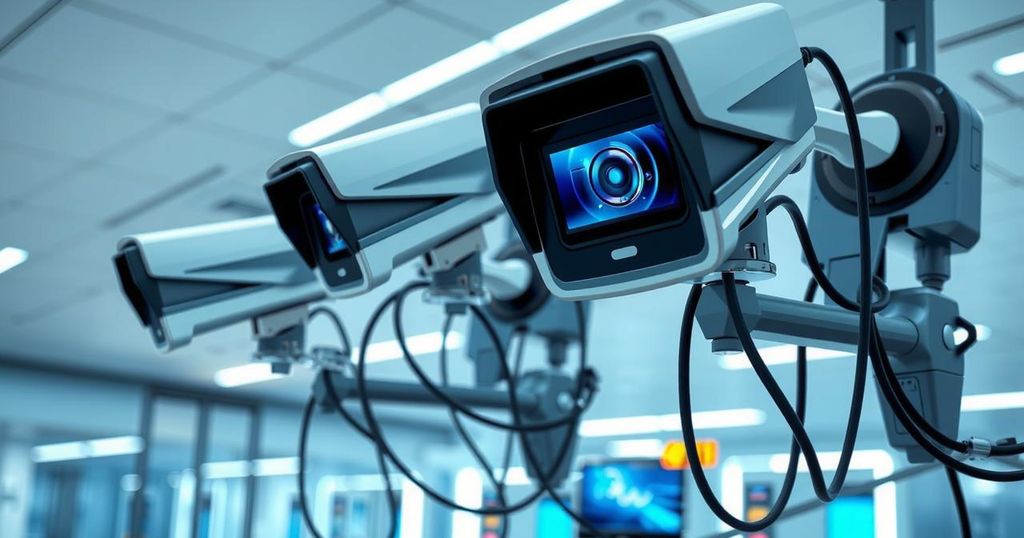The latest advancements in optical tactile sensors bring forth a new era of biometric recognition technologies. These sensors can analyze both static and dynamic forces simultaneously from a single image, thanks to their innovative design and use of machine learning. Led by a team from UNIST and Seoul National University, this technology has applications in handwriting analysis, fingerprint recognition, and converting braille to voice, showcasing its multifaceted potential in dynamic sensing systems.
Recent advancements in optical tactile sensors are shining a light on their potential in biometric recognition technology. These innovative sensors can analyze dynamic touch forces from a single optical image, breaking past the limitations of previous systems. Their applications span various domains, including handwriting emotion analysis, surface characterization, and safeguarding against counterfeiting. A team of researchers, led by Professors Jiseok Lee, Hyunhyub Ko, and Donghyuk Kim from the School of Energy and Chemical Engineering at UNIST, along with Professor Jungwook Kim from Seoul National University, have unveiled a novel optical tactile sensor capable of real-time analysis of dynamic touch signals. Their findings, published in Nature Communications, mark a significant leap in sensor technology. Traditionally, sensors could only measure either static or dynamic forces; this new technology allows for the simultaneous separation and analysis of both types of forces. This capability has considerable implications, such as providing visual representations of variations in handwriting pressure and speed and enhancing individual identification through machine learning. At the core of this technology are upconversion nanoparticles, which allow for high-resolution measurements of dynamic forces by detecting external stimuli via near-infrared light. The team further augmented the data analysis process by employing machine learning techniques that can distinguish between vertical pressure and frictional shear forces. This was substantiated through finite element analysis, confirming the sensor’s performance and signal integrity. Designed to mimic human skin’s sensory structure, this sensor captures precise force variations. It can detect minute forces down to 0.05 N and has an impressive response time of just 9.12 milliseconds. Potential applications extend beyond handwriting analysis, potentially enhancing fingerprint recognition and enabling braille interpretation systems. The researchers have demonstrated this capability by developing a system that converts braille into voice, illustrating its practical utility in dynamic biometric systems and thwarting counterfeiting efforts. Professor Lee remarked on the novelty of their approach, emphasizing the ability to visualize both static pressure and dynamic friction for real-time analysis through machine learning. First author Changil Son also highlighted the sensor’s potential for future applications in high-sensitivity handwriting detection. Co-author Chaeyong Ryu noted its implications for the evolution of AI-based sensors in robotics. In summary, these novel optical tactile sensors represent a significant advancement in biometric recognition technology, paving the way for applications that leverage real-time analysis of touch dynamics and enhancing various fields reliant on precise tactile detection. The future holds promising perspectives for these technologies within the realms of security, identification, and automation.
Optical tactile sensors are at the forefront of technological innovation aimed at enhancing biometric recognition technologies. They serve as critical tools for interpreting human interaction through touch, addressing previous limitations in sensor technology that restricted the measurement of either static or dynamic forces. The need for more sophisticated sensing capabilities has grown, sparking interest in developing solutions that can analyze touch in real time. This advancement aims to push the boundaries of what biometric systems can achieve, tapping into applications in security, robotics, and digital communication.
In conclusion, the development of novel optical tactile sensors is a groundbreaking achievement that dramatically enhances the field of biometric recognition technologies. The capabilities for real-time separation and analysis of dynamic touch signals have the potential to transform a variety of applications, including handwriting emotion analysis and anti-counterfeiting efforts. With the integration of machine learning, these sensors can lead to improved performance in identifying individuals and understanding tactile interactions more profoundly. The insights gained from this research signify a promising future for advanced biometric systems.
Original Source: techxplore.com





